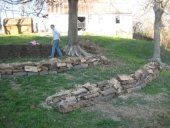
 7
7




 11
11




 6
6




 6
6





 10
10




 If the crowns starts to lose vigour, are crowded, and a good dressing of rich stuff doesn't perk them up, then division seems like a good plan.
If the crowns starts to lose vigour, are crowded, and a good dressing of rich stuff doesn't perk them up, then division seems like a good plan.How Permies works: https://permies.com/wiki/34193/permies-works-links-threads
My projects on Skye: The tree field, Growing and landracing, perennial polycultures, "Don't dream it - be it! "
 6
6





 9
9




Works at a residential alternative high school in the Himalayas SECMOL.org . "Back home" is Cape Cod, E Coast USA.
 7
7




 6
6




 6
6









|
What a beautiful glass! Yoink! This glass is now the property of this tiny ad:
The new gardening playing cards kickstarter is now live!
https://www.kickstarter.com/projects/paulwheaton/garden-cards
|






